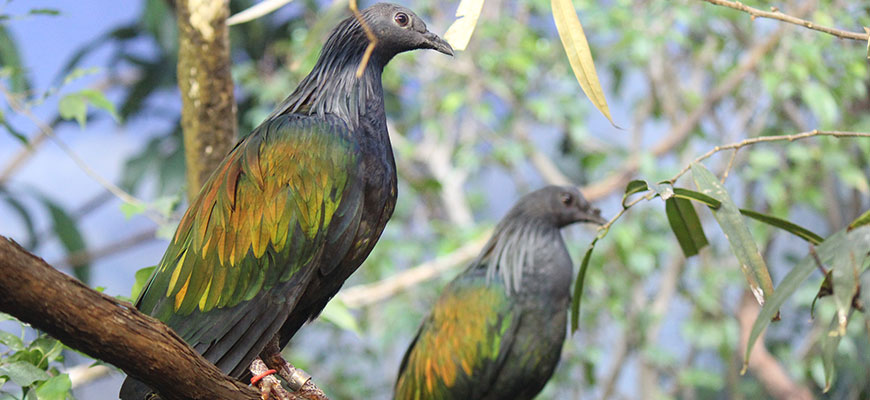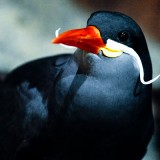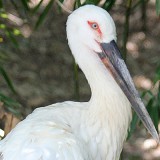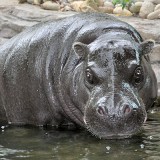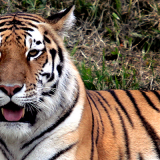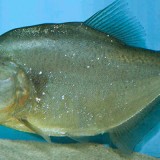CLASSIFICATION
Order: Columbiformes
Family: Columbidae
Genus: Caloenas
Species: nicobarica
RANGE
South-east Asia, mainly in the Nicobar Islands to New Guinea and other islands of the Indo-Australian Region and as far north as the Philippines.
HABITAT
Small forested islands
SIZE
Length: 14 – 16 inches (32 – 36 cm)
Weight: Male: 460 – 525 g, Female: 490 – 600 g
LIFE EXPECTANCY
Unknown
REPRODUCTION
- Nicobar pigeons, like many other pigeons, have a defined courtship display. The usually quiet birds, do make a deep cooing sound, and the males begin courtship with a loud cooing and displaying towards the female.
- As breeding season advances the display turns to a bowing motion from the male towards the female, and after a few days he begins to gather materials which the female uses to build a nest.
- Tend to nest and roost on Islands not inhabited by humans, but will flock to larger islands to search for food.
- The nest is normally built in brushy areas, between 2 – 12 meters off the ground.
They lay one to two eggs, which are elliptical in shape and white, with a faint bluish tint.
Both the male and the female share the duties incubating the egg for about 30 days.
Males and females usually mate for life. (monogamous) - Chicks are “altricial”, meaning they are almost completely helpless when hatching. It takes about 10 days before feathers (down) forms. Parent share in the duties of keeping them warm. The female feeds them a regurgitated fluid known as “crop milk” until they are big enough to gradually be shifted over to seed and fruit.
- Chicks are able to fend for themselves about a month later.
DIET
Wild: Hard seeds, fruits, & insects
Zoo: Grain, seeds, fruit
BEHAVIOR
- Can be found feeding on the forest floor, and spends a great deal of time on the ground. Most active feeding takes place at dawn & dusk.
- Nomadic. Move about in large flocks, up to 85 birds, during the day and roost together at night, less active in mid-day when it can be found perching from the middle to top levels of the trees.
- Vocalization characterized as a cooing sound.
- Their flight is characterized as being strong and swift.
POINTS OF INTEREST
- Recent DNA studies of a DoDo bird specimen in the Oxford University Museum of Natural History show that the closest living relative is the Nicobar pigeon.
- Have a strong muscular gizzard. Can eat nuts that are so hard that a human would require a hammer to open.
- Make a sound like a pig grunting when threatening others.
- One of its distinguishing features is the elongated feathers around its neck and down the back of its head.
STATUS
CITES Appendix I
Mainly endangered due to heavy hunting and habitat destruction.
REFERENCES

